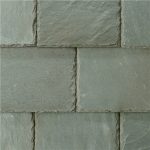Introduction
Stone veneer has become a popular choice for homeowners looking to enhance the appearance of their homes without breaking the bank. With its natural beauty and durability, stone veneer offers a cost-effective way to add elegance and charm to any property. In this comprehensive guide, we will explore the world of affordable stone veneer, from its benefits and installation process to maintenance tips and design ideas.
Benefits of Stone Veneer
1. Cost-Effective Alternative
Stone veneer is a more affordable option compared to natural stone, making it an attractive choice for budget-conscious homeowners. With advancements in manufacturing techniques, stone veneer closely mimics the look and texture of natural stone at a fraction of the cost.
2. Durability
Despite its lower cost, stone veneer is highly durable and long-lasting. It can withstand harsh weather conditions, including extreme temperatures and moisture, without losing its beauty or structural integrity. This durability makes it a practical choice for both interior and exterior applications.
3. Versatility
Stone veneer comes in a wide range of colors, textures, and styles, allowing homeowners to achieve their desired aesthetic. Whether you prefer a rustic, traditional, or modern look, there is a stone veneer option to suit your taste and complement your home's architecture.
4. Easy Installation
Compared to natural stone, stone veneer is relatively easy to install, making it a popular choice for DIY enthusiasts. The lightweight nature of stone veneer simplifies the installation process, reducing labor costs and time spent on the project.
5. Low Maintenance
Once installed, stone veneer requires minimal maintenance to keep it looking its best. Regular cleaning with water and mild soap is usually sufficient to remove dirt and debris. Additionally, stone veneer is resistant to mold, mildew, and pests, reducing the need for costly repairs or replacements.
Installation Process
1. Preparation
Before installing stone veneer, ensure that the surface is clean, dry, and free of debris. Remove any existing siding or cladding, and inspect the substrate for any damage or imperfections that need to be addressed before installation.
2. Cultured stone maintenance tips of Waterproofing Membrane
To protect the substrate from moisture and water damage, apply a waterproofing membrane to the surface before installing the stone veneer. This step is crucial in ensuring the longevity and performance of the veneer.
3. Layout and Cutting
Plan the layout of the stone veneer to ensure a cohesive and visually appealing design. Use a saw or grinder to cut the veneer to the desired size and shape, taking care to wear appropriate safety gear during the cutting process.
4. Adhesive Application
Apply a high-quality adhesive or mortar to the back of each stone veneer piece before placing it on the wall. Press firmly to ensure a strong bond between the veneer and the substrate, and use spacers to maintain consistent spacing between the stones.
5. Grouting

Once the stone veneer is in place, fill the gaps between the stones with grout to create a seamless and polished look. Use a grout bag or trowel to apply the grout, and smooth it out to achieve a uniform finish.
6. Sealing
To protect the stone veneer from stains and moisture, consider applying a sealant once the installation is complete. This additional step can enhance the longevity and appearance of the veneer, ensuring that it remains in top condition for years to come.
Maintenance Tips
1. Regular Cleaning
To keep your stone veneer looking its best, clean it regularly with water and mild soap. Avoid using abrasive cleaners or harsh chemicals, as they can damage the surface of the veneer.
2. Inspection
Periodically inspect the stone veneer for any signs of damage, such as cracks, chips, or discoloration. Address any issues promptly to prevent further deterioration and maintain the integrity of the veneer.
3. Sealant Reapplication
If you notice that water no longer beads on the surface of the stone veneer, it may be time to reapply the sealant. Follow the manufacturer's instructions for proper application and ensure that the veneer is clean and dry before sealing.
4. Avoid Pressure Washing
While stone veneer is durable, avoid using a pressure washer to clean it, as the high pressure can damage the surface and grout. Instead, use a garden hose with a gentle spray to wash away dirt and debris.
Design Ideas
1. Accent Wall
Create a focal point in your living room or bedroom by installing stone veneer on an accent wall. Choose a textured or multi-colored veneer to add depth and visual interest to the space.
2. Fireplace Surround
Enhance the look of your fireplace by adding stone veneer to the surrounding wall. This simple yet effective upgrade can transform the entire room and give it a cozy, rustic feel.
3. Exterior Facade
Boost your home's curb appeal by covering the exterior facade with stone veneer. Opt for a natural stone finish to create a timeless and elegant look that will impress visitors and passersby alike.
4. Kitchen Backsplash
Add character to your kitchen by installing stone veneer as a backsplash behind the stove or sink. Choose a sleek, modern veneer for a contemporary kitchen design or a rustic, textured veneer for a more traditional look.
Conclusion
Affordable stone veneer offers a cost-effective way to enhance the beauty and value of your home. With its durability, versatility, and easy installation process, stone veneer is a practical choice for homeowners looking to upgrade their property without breaking the bank. By following the installation tips, maintenance guidelines, and design ideas outlined in this guide, you can transform your home with style and savings.
